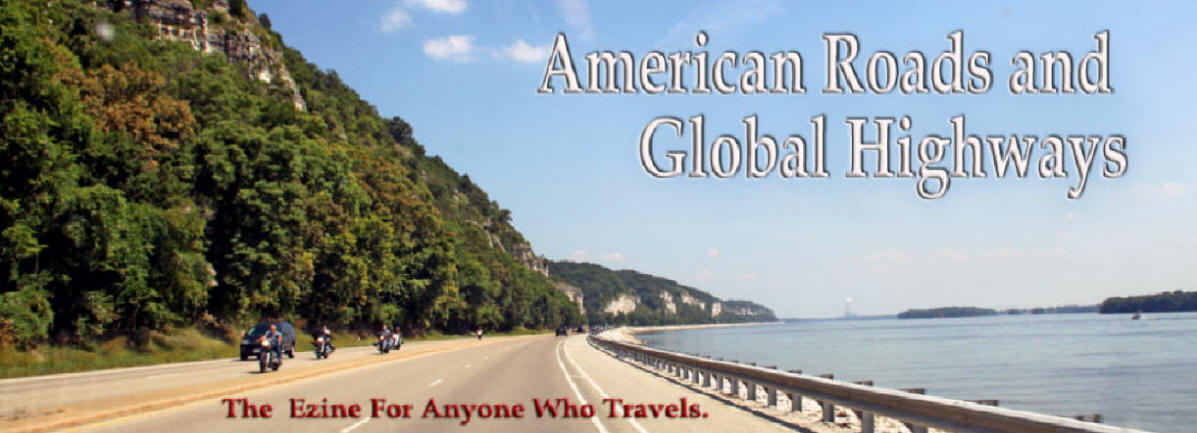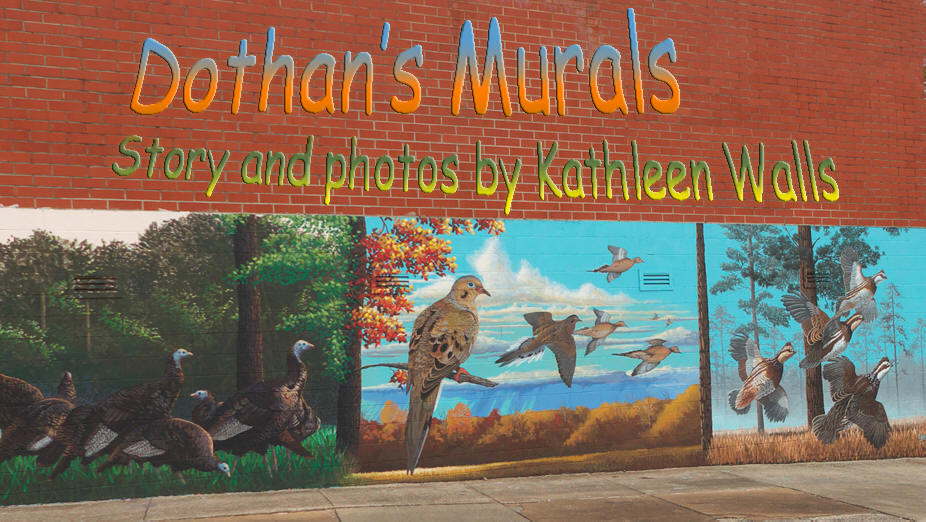
Dothan, Alabama is a small city with a big story. It's the heart of the Wiregrass Area. Dothan's murals tell the story of the Wiregrass Area and even of the state of Alabama.
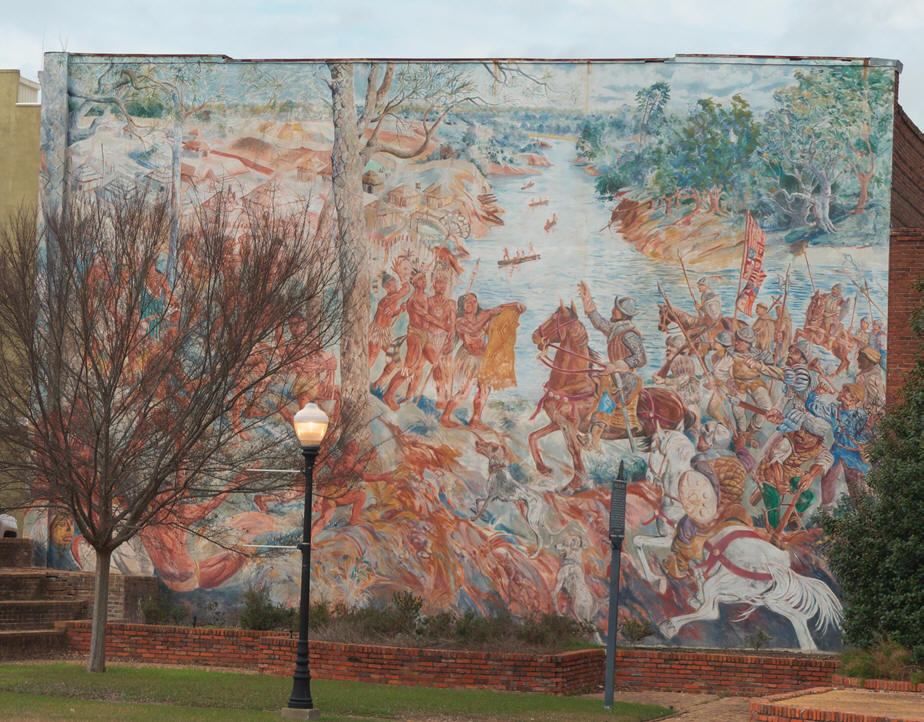
Once the land of the Alabama Indians and the Creeks, white settlers began moving into the area in the late 1700s. They called the settlement Poplar Head. This mural depicts DeSoto meeting with some Creeks in the 1500s while he crossed Alabama into Mississippi where he died and was buried secretly by his men.

Timber and turpentine were among the earliest products in the Wiregrass area. Pitch, a resin product of the pine tree, was used to calk and waterproof ships. In the 1800s England was buying all the pitch wiregrass residents could produce. Slashing for turpentine and pitch eventually killed off the trees. Timber was the next big export item for building ships.
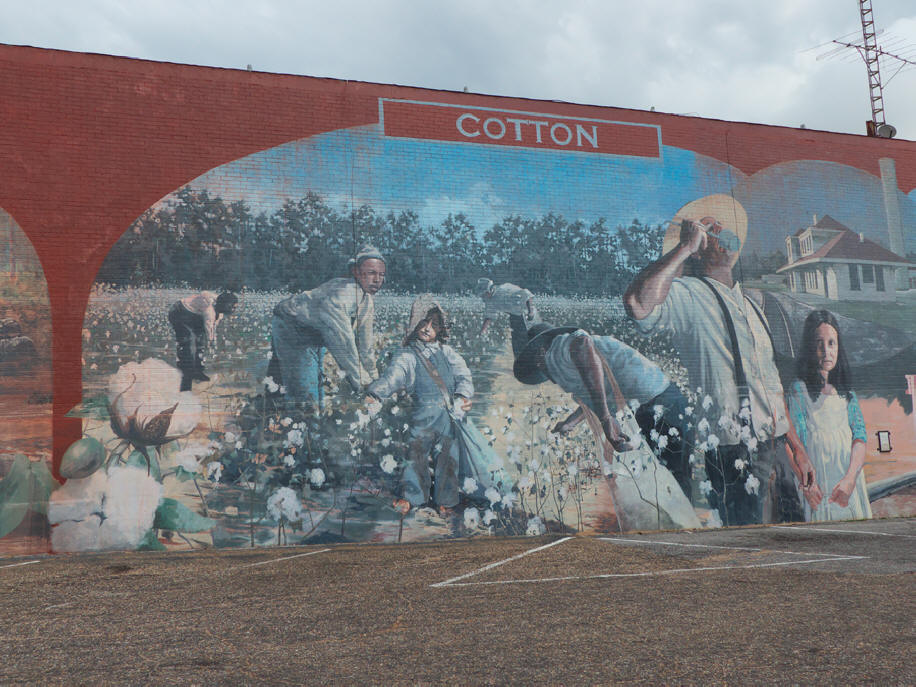
After the timber was cleared, cotton became the main crop. It remained top crop until the mid to late 1920s when the boll weevil invaded the fields and made it unprofitable.

In the early days of the Wiregrass, mules were an important part of agrarian life. They hauled cotton bales, pulled plows, and pulled farm family wagons to church on Sunday. This mural is located just a block from what was once Holman Mule stable where sometimes 500 mules per month were sold.
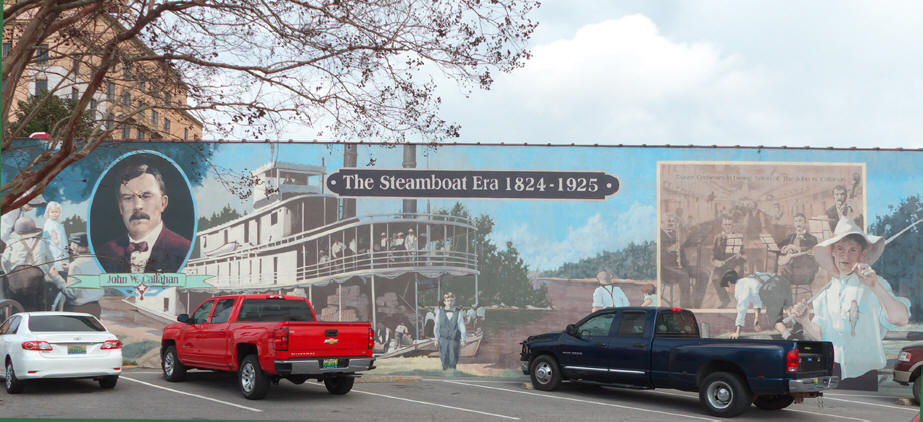
In the 1800s there were few roads in the Wiregrass Area. Steamboats on the Chattahoochee River carried passengers and freight. The John W. Callahan, the steamboat portrayed in the mural, had a lower deck for carrying freight, the middle deck offered nice cabins, and on top were a dining room and dance floor with a bandstand for the orchestra that entertained passengers enroute. It was the main source of travel and shipping until the arrival of the railroad.
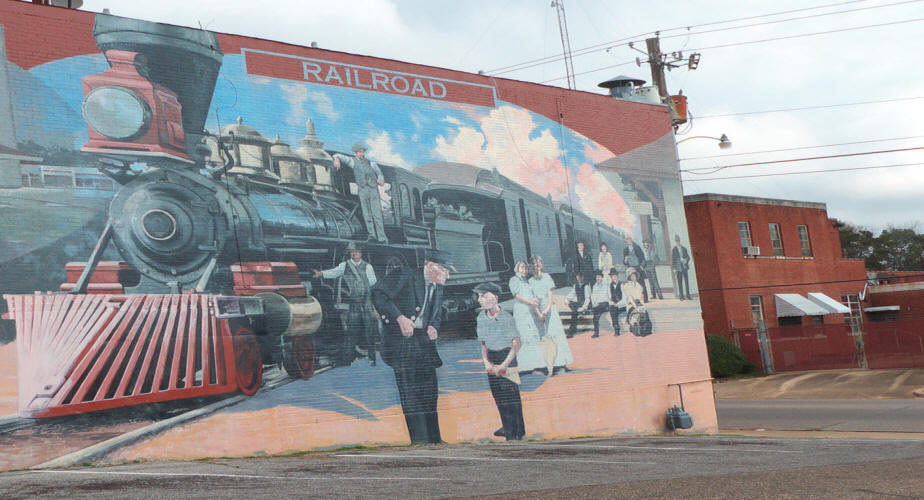
The coming of the railroad brought prosperity to Dothan. Alabama Midlands Railroad planned to extend to Montgomery via Columbus but Columbus refused to pay the $50,000 to have the station and sidings built. Dothan, having a population of only 240 in 1889, raised $46.500 of the money and promised to pay the remainder. The railroad rolled its first train into Dothan on August 13, 1889. By 1900, the population had grown to 3,850. They never did pay the remainder of the station fee.

October 12, 1889, Dothan was the scene of a riot that broke out over a tax levied on wagons operating within the city. Local farmers formed a association called the "Farmers Alliance". When some of the members were arrested it led to a riot that left two men dead and others wounded. The Chief of Police Tobe Domingus was arrested, charged with murder and sentenced to ten years in prison. The sentence was late overturned by appeal.

The Cherry Street A. M. E. Church mural (see
more about it here) tells the story of right triumphing over
racism. The mural shows Black children gathering bricks since the
local brickyard refused to sell bricks to the Black pastor to build
the church.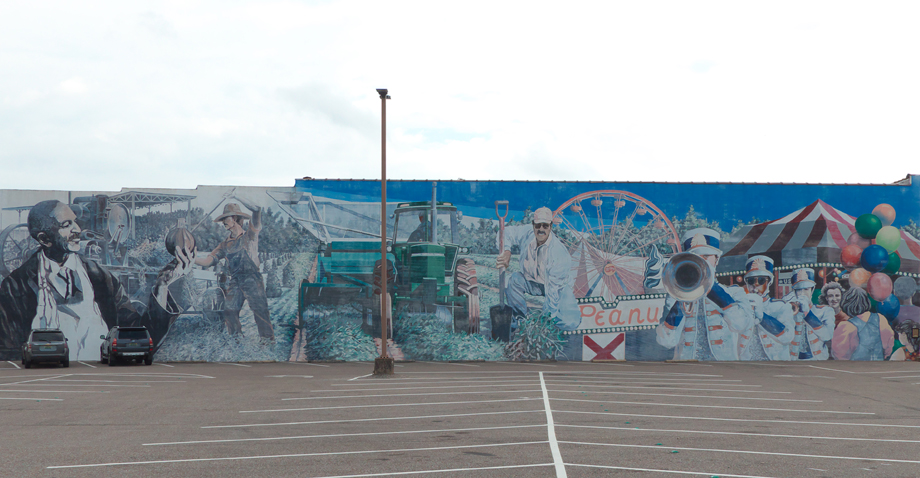
After the boll weevil invasion, peanuts became the crop of choice in the Wiregrass. The mural shows Dr. George Washington Carver, the man who almost singlehandedly made the peanut the successful crop it is today. There is a museum dedicated to Dr. Carver that will be featured in a later issue. Another feature of the mural portrays the annual Peanut Festival honoring the humble legume. Precious Freeman, Director of the G.W. Carver Museum, led us on the murals tour and told us a little of the back stories. It seems that two of the artist painting murals at the same time fell in love and divorced their current spouse and married each other.

The mural, Sherman Rose and the Tuskegee Airmen, is another story of fairness rising above racism. In 1939, Tuskegee Institute started a program for civilian pilot training. Sherman Rose of Dothan enrolled but he and other Black pilots were not accepted into the army. It wasn't until 1941that an all Black squadron was formed. They never lost a single plane during WWII and were the only fighter group to ever sink a German destroyer. After the war Sherman Rose became the first Black flight instructor.

Women of the Wiregrass is a tribute to the contributions of women over the years. I love the different styles all blended together as well as all the occupations shown.
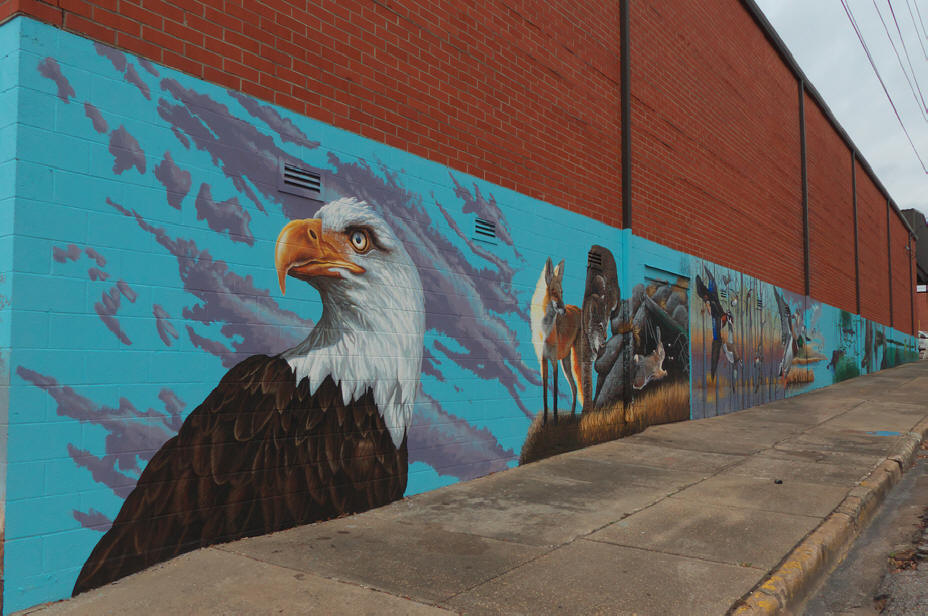
Wildlife in the Wiregrass is Dothan's newest mural. It portrays not only wildlife you are likely to see but some of the rarer animals once prevalent there. Dothan's Botanical Gardens is a good place to look for some of these beauties as well as botanical treasures.

Country Music is represented among the three music murals. Right up front is one of my all time favorites, George Jones, who lived for a time in Enterprise. Naturally Alabama's own Hank Williams, his wife, Audrey, and son Hank Jr. are all recognized.
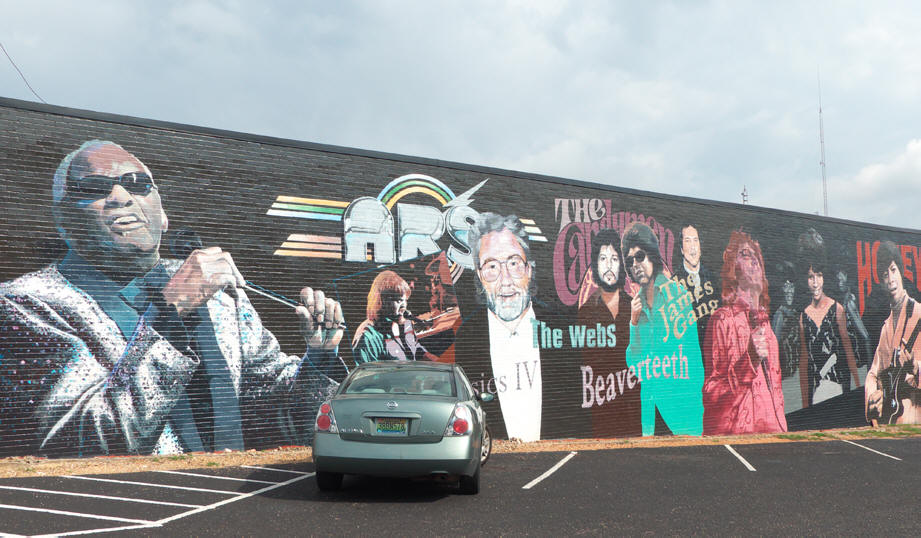 Alabama
born Ray Charles is larger than life in the contemporary mural.
These are just a selection of the 23 murals that grace the walls of
many Dothan buildings. Dothan hosts an annual Mural Artwalk to
celebrate these magnificent pieces of art.
Alabama
born Ray Charles is larger than life in the contemporary mural.
These are just a selection of the 23 murals that grace the walls of
many Dothan buildings. Dothan hosts an annual Mural Artwalk to
celebrate these magnificent pieces of art.
For more info:
